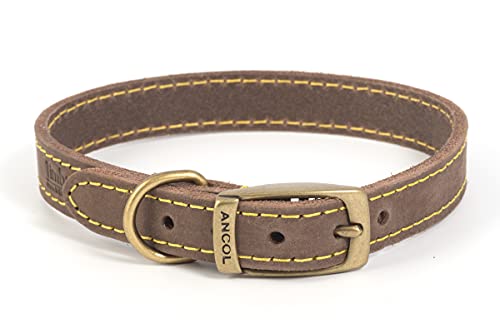Dog collars are essential accessories for every dog owner. Not only do they serve as identification and a tool for controlling dogs, but they also express their personalities and style. When purchasing a collar for your furry friend, it’s crucial to consider its material because different materials have different strengths and weaknesses that can affect your pet’s comfort and safety. In this article, we’ll explore the most commonly used materials for dog collars.
Nylon collars
Nylon is a popular material used for dog collars because it’s lightweight, durable, and affordable. The material is available in a variety of colors and patterns, which makes it easy to find collars that match dogs’ personalities. However, nylon collars have a tendency to trap bacteria and odors, which can compromise dogs’ health. To overcome these issues, it’s advisable to wash nylon collars regularly and avoid using them on dogs with sensitive skin.
Leather collars
Leather has been a common material for dog collars for centuries due to its durability, comfort, and classic look. Leather collars are available in different styles, including flat, rolled, and round shapes, and they come in various colors. Leather collars are ideal for large breeds because they provide significant strength and help distribute weight evenly. However, leather collars require maintenance to prevent them from degrading quickly. Owners should regularly clean and condition the collars to keep them supple and avoid cracking.
Metal collars
Metal collars are for dogs with strong necks that need extra control. Metal collars are also known as choke chains, and they’re commonly used by dog trainers for obedience training. They’re made of steel, brass, or chrome, and they have links that can tighten or release as a dog pulls or relaxes. Metal collars require caution when used because they can cause injury to dogs, especially if the collar is too tight or left on unsupervised. Owners should also ensure that the collar is the right size for their dog to prevent it from becoming too tight and causing discomfort.
Rubber collars
Rubber collars are excellent for dogs that love to swim and are involved in water activities. Rubber collars are waterproof, easy to clean, and flexible. They come in a variety of colors and designs that fit dogs’ personalities. Rubber collars are also safe for dogs with sensitive skin because they don’t trap bacteria, and they’re lightweight. However, rubber collars may not be suitable for dogs that like to chew because they can easily break them.
There are numerous materials used in making dog collars, and each has its pros and cons. Dog owners must choose collars based on their pets’ needs and preferences. When selecting a collar, it’s advisable to prioritize comfort, safety, and durability. Consider factors such as the activity level of your dog, the breed, and the environment. Ultimately, choosing the right collar will ensure your dog enjoys their walks and stays happy and healthy.






